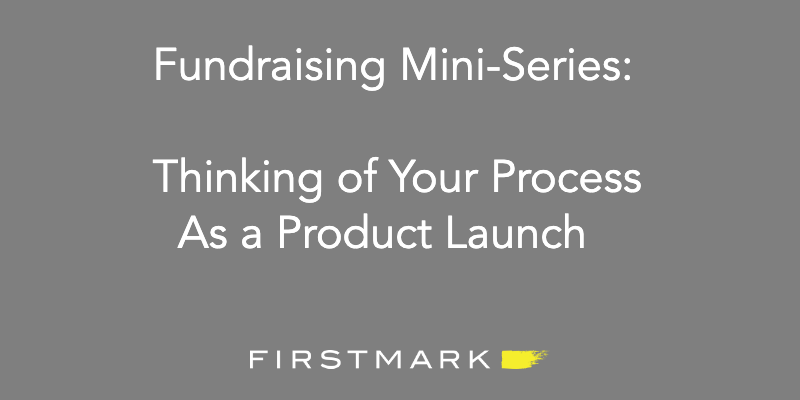
For founders thinking through fundraising, here’s a simple mental model I like:
“If this was a product launch, instead of a fundraising process, what would you do?”
Almost by definition, founders are very passionate about launching new products, and a lot of it comes instinctively. That’s often less the case for fundraising, sometimes considered as a counter-intuitive chore.
What are some of the key ideas when one launches a new product?
- The launch is a big deal, and you need to plan weeks or months in advance
- A successful launch requires singular focus
- You need to understand your market – what do your users want?
- Your product needs to delight your users
- You need both marketing (perhaps even some buzz) and sales
- Design matters, first impressions matter
- You may want to do a soft launch as a test
- You may want to start with an MVP, and quickly iterate
- Etc
Take any of those ideas (there are more), and apply them to fundraising – it’s really interesting how well they translate.
Take the idea of a “fundraising soft launch”, for example. That means you probably want to do your first pitches with a smaller group where a bad pitch will have less consequences. If you have existing investors, start with them. Then as a second step, perhaps go pitch a small group of investors that you are less excited about (but don’t exhaust your “B List”, as you definitely need to save some for later).
Or take the related idea of a “fundraising MVP”. Perhaps that means a rougher version of the deck. You’re still working on the exact flow, you’re still working on the design. You may still be thinking about the exact amount to ask for, etc.
With your MVP, you’ll get a first glimpse into whether the story sticks or not, and a sense for the kind of questions you get.
From there, you can iterate – meaning, evolving the story, the flow and becoming sharper in answering each question.
As a perfect illustration of this: I love this story about Tobias Lutke, the founder of Shopify, as told on the Tim Ferris podcast (transcript):
“He set up meetings with venture capitalists and listened to their questions about Shopify’s attrition rates and conversion rates and ‘funnel’ (the various means by which a company attracts the attention, and secures the commitment, of new customers).” […]. “He had no idea what they were talking about, but he wrote down the terms. Then he went back to the hostel he was staying in,” [that also tells you something], “and looked everything up on Wikipedia. He would read up on how to calculate contribution margin ratio (the amount by which sales exceed variable production costs), then go to Shopify’s database to get the numbers. ‘Oh,’ he’d think, ‘that’s an interesting way to look at the business.’ Then, at the next meeting, he was able to answer one more question.”
If it worked for Tobi….
This article is highly helpful to me to understand the Investors expectations. I use these steps for my startup Idea Link:- twitter.com/swamy1958 — to reach Investors / Technocrats.